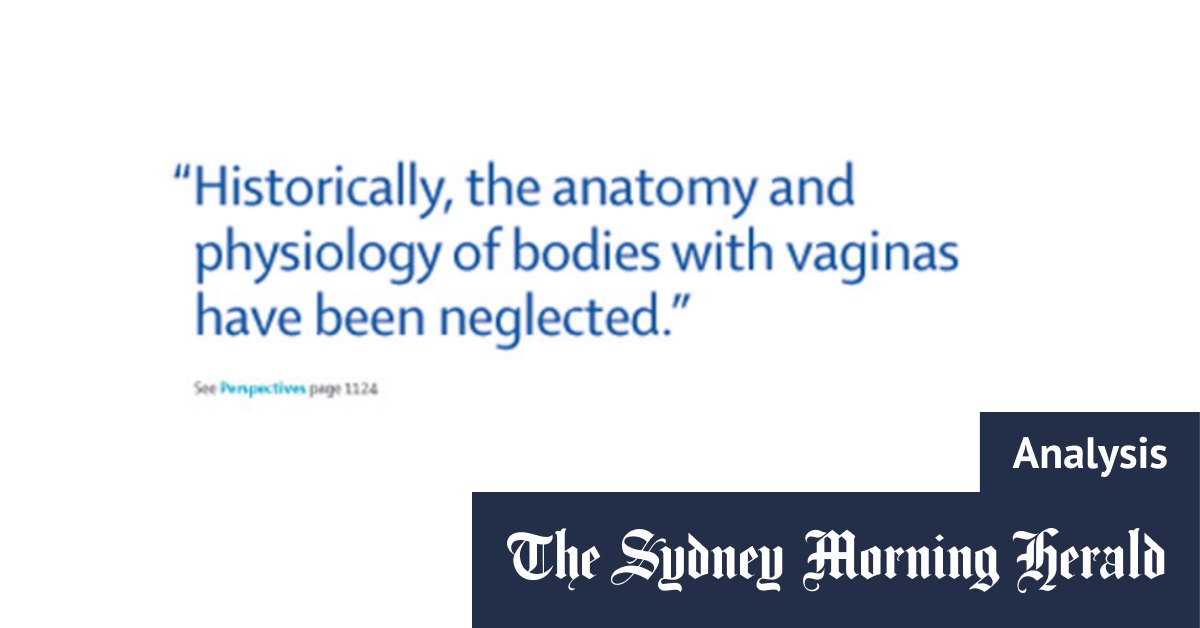[ad_1]
It is clear that in Davis’ formulation, “body with vaginas” is a substitute for “women,” and in the context of an essay in a medical journal, this does not seem particularly problematic.
Isolated on the cover, however, this is a bit more difficult and could be read as a reduction of femininity to a piece of meat with a genital organ (although keep in mind that references to “bodies” in a context are common). On Twitter, with little context, he landed like a hand grenade.
Transgender man Freddy McConnell gave birth to a child, an experience documented in the movie Seahorse.
So why not just say women?
The answer lies in the way in which the term “women†itself is now contested. Does it denote a set of biological characteristics established from birth, or an identity that may emerge over time, with an element of self-determination? Or both, plus a whole bunch of other identities along the continuum between those two points?
The trans rights movement insists that trans women are women. It is estimated that only 10 percent of trans women undergo gender-affirming genital surgery; from a trans rights perspective, having a vagina is not an essential part of identifying as a woman.
But gender-sensitive feminists – sometimes pejoratively referred to as TERFs (Radical Trans-Exclusionist Feminists) – argue that just declaring yourself a woman does not make you a woman.
Thus, the term “body with vaginas” is an attempt by Davis and The Lancet flag “women” as biological entities while recognizing that some women (including, but not limited to, trans women) may not own or even desire to own a vagina.
What’s so bad about it?
There are many feminists who see this and other attempts to change language – such as the use of the term “breastfeeding” instead of “breastfeeding” and “front hole” rather than “vagina” – as part of the term. ‘a campaign to erase sex. And that potentially has implications, they argue, in a range of fields, including medicine, law and law enforcement.
There are also a lot of ordinary people who bristle at what they see as an attempt to impose some sort of Orwellian Newspeak on them.
And there are a lot of people in the medical and scientific communities who view the shift from sex to gender as anti-scientific, with the potential to skew research and data. For Lancet readers who align with these views, the newspaper has sacrificed science and objectivity in its rush to capitulate to the trans rights lobby (several have claimed on Twitter that they will no longer write or review never again for the newspaper). And in the process, he roughly reduced women to pieces of meat with a sex organ, just like a serial killer might, some angrily observed.
So this is clearly wrong, then?
Not so fast. There is a great deal of evidence that gender is not a matter of genitals, and that even for “bodies with vaginas” (ie those we have traditionally understood as “women”), the he experience of femininity is far from uniform. The same, of course, applies to bodies with penises (those we have traditionally understood as “men”).
If we accept that human identity can encompass a whole range of positions along a continuum, then we need language that reflects this more accurately. As the Victorian government guide on the subject notes, “The health and well-being outcomes of people with trans and gender diverse experiences are directly linked to stigma, prejudice, discrimination and abuse. transphobic, including when incorrect language is used, often without knowing it â€.
Loading
So what are we supposed to say?
The aforementioned guide advises to speak of “sexual characteristics” rather than “biological sex”. He doesn’t offer much help with the genitals other than advising that “the physical organs… should not be gendered as male or femaleâ€.
Trans health resource site Transhub says it uses “medical terms like” penis, “” vagina / front hole, “and” anus, “” but also notes that “our communities often use similar words for parts. quite different bodies – especially our genitals “. . In other words, language, like identity, is fluid.
The ACON Clinic Preferred Language Guide suggests “upper body†instead of chest or breast, “erogenous or erectile tissue†instead of penis or clitoris, and “internal genitals†instead of breast. vagina.
Are you saying that “penis†and “vagina†are now banned? “Woman” too?
Well, some of the more extreme elements of the trans rights lobby would be in favor of that. But more moderate voices just want additional language that takes into account the experiences of trans people. A trans man, for example, can have a baby, but would not identify as a mother. A trans woman may not have a vagina, but can identify with herself and live her life in all ways as a woman.
The challenge is to find ways to include this range of experiences and identities without excluding the vast majority who conform to the more traditional connotations of words whose meaning is increasingly to be grasped.
It requires a degree of empathy and compromise that the social media battleground rarely encourages, and there are no easy answers. Except, perhaps, that calling women “body with vagina” probably isn’t the best place to start.
The Morning Edition newsletter is our guide to the most important and interesting stories, analysis and ideas of the day. register here.
[ad_2]

